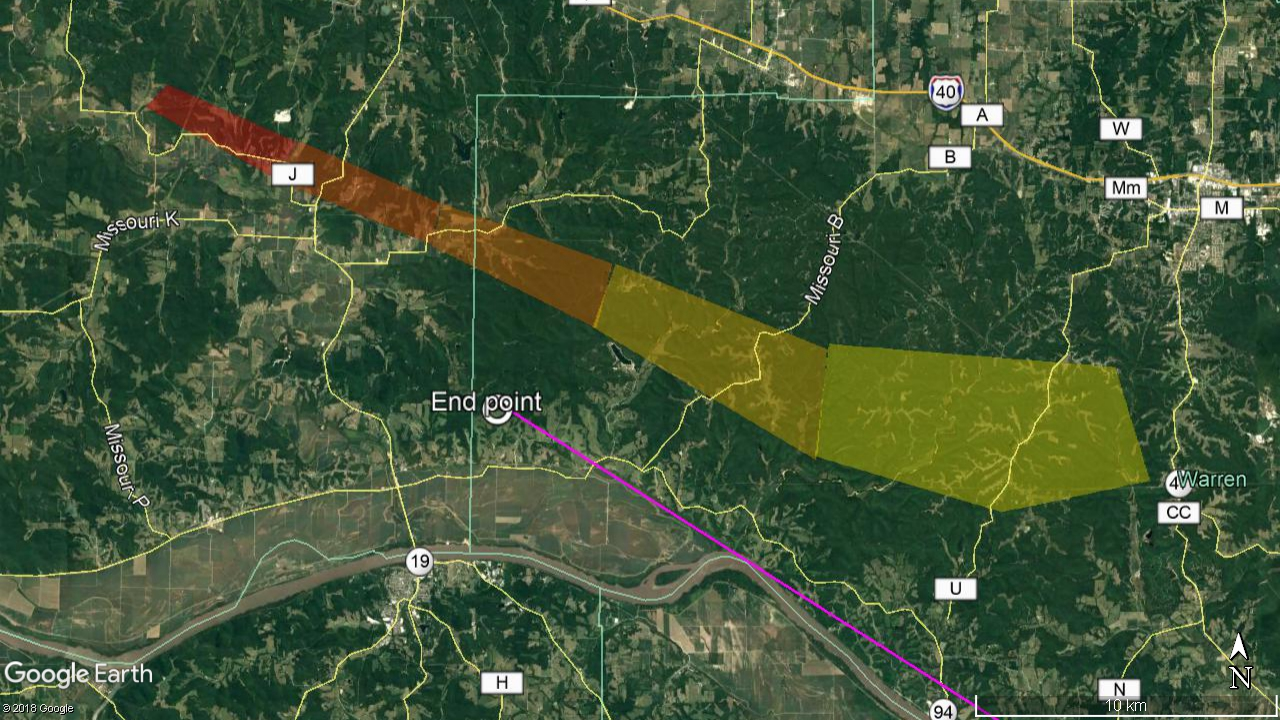DATE/TIME11/11/2019 @ 02:51 UTC11/11/2019
|
LAT/LONG38.769045 • -91.310246
38.769045
|

This meteorite fall was a brilliant fireball that occurred at 8:51 PM local time on 11 Nov 2019, or 12 Nov 2019 0251 UTC. The fireball passed very near to St. Louis, MO and 282 eyewitnesses reported it to the American Meteor Society across the American midwest. Twenty eyewitnesses near St. Louis reported hearing sonic booms or other noises from the falling meteorites.
Meteorites have not been recovered from this event.
This event is recorded as American Meteor Society event number 5,566 for 2019. Signatures of falling meteorites can be found in imagery from one nearby weather radar. In the NEXRAD weather radar network operated by NOAA, the KLSX (St. Louis, MO) radar records signatures of falling meteorites.
The first appearance of falling meteorites on radar occurs at 02:56:35 UTC and 1,729 m above sea level (ASL) in the 0252 UTC data set in the 1.36 degree elevation radar sweep. Signatures consistent with falling meteorites appear in a total of three radar sweeps, with a final signature appearing at 02:58:11.3 UTC.
This meteorite fall occurred into a significant headwind of up to 65 m/s (145 mph) at ~10 km altitude, coming out of a compass heading of about 270 degrees. The force of the wind was enough to cause smaller meteorites to reverse course in mid-air, from traveling WNW out of the fireball to traveling towards the east at lower altitude. Below 4 km altitude, winds shifted out of the north, were not as strong, but were enough to distort the strewn field for the smallest meteorite masses. The result is a strewn field that is offset from the meteor ground track and elongated back towards the original direction of travel.
